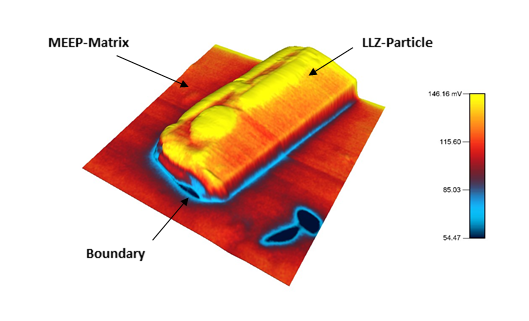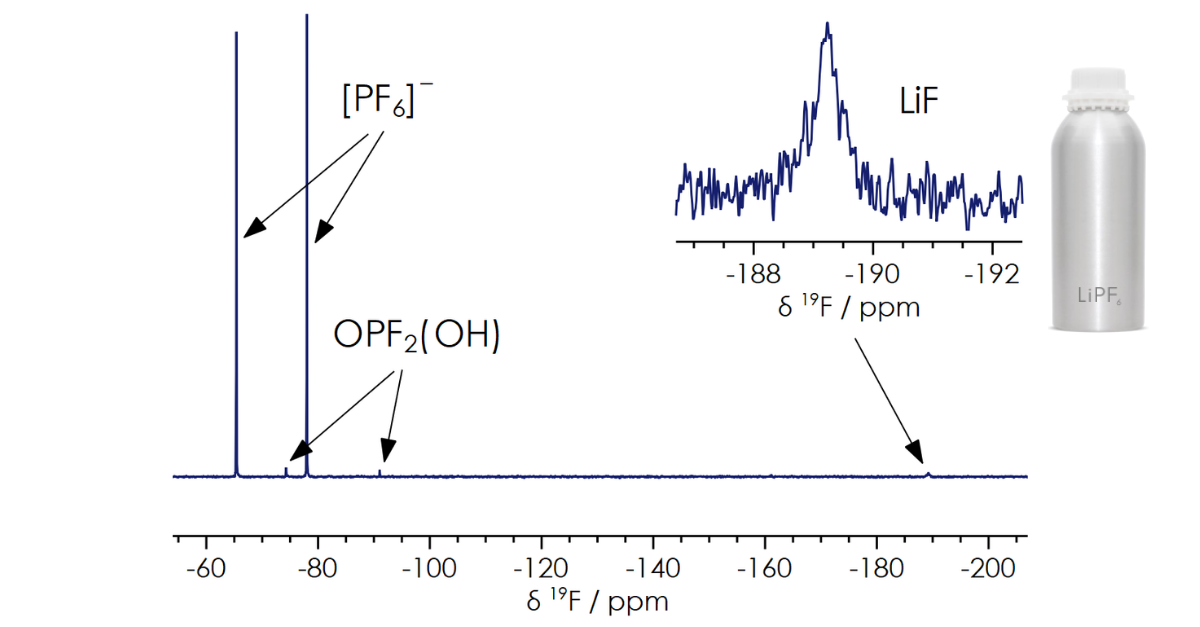Understanding structure-composition-property-performance relationships is fundamental in developing higher performance, longer-life, affordable Li-ion batteries. Correlative Raman Imaging and Scanning Electron Microscopy (RISE) is extremely powerful to visualise structural and chemical information, including: molecular composition, grain fractures, solid electrolyte interphase (SEI) formation and electrode degradation. High-resolution scanning electron microscopy (SEM) characterises electrode ultrastructure and energy-dispersive X-ray spectroscopy (EDS) detects incorporated elements. Li-containing molecules are identified by Raman spectra, which reveals localisation, concentration and polymorph changes.
Fig. 1a - 1c: Raman microscopy and SEM-EDS mapping investigation of 18650 cell LMO batteries
Using a WITec alpha300 confocal Raman microscope integrated with SEM, we examined cross sections of 18650 Li-ion battery cells before and after cycling. SEM-EDS of the new battery reveals the cathode consists of Co/Ni (pink) and Mn-rich parts (cyan) (Fig. 1a). Raman imaging additionally identifies the graphite (cyan) and amorphous carbon (blue) in the anode, and amorphous carbon and lithium with manganese oxides (MO, red) in the cathode (Fig. 1b). The separator layer of polyethylene (PE, green) between two layers of polypropylene (PP, yellow). During cycling (Fig. 1c), the uniaxial polymer chains deteriorate, appearing as bi-axial PP in the used battery and are likely to significantly reduce battery performance.
Fig. 2a - 2d: RISE microscopy analysis of the cathode of a fast-cycled NMC battery
We then analysed Lithium-Nickel-Manganese-Cobalt-Oxide (NMC) batteries that underwent fast recharging with 40% loss of capacity. Reduced performance often occurs from inhomogeneous electrode microstructure degradation. In the RISE image, the new charged cathode particles consist of uniform MO (Fig. 2a, b). Rapid cycling induced significant changes in particle lithiation with the Raman spectral peaks broadening and shifting (Fig. 2c). The RISE image of one cycled MO particle reveals a high level of inhomogeneity and degradation in the form of cracks (Fig. 2d).
This case study demonstrates the power of RISE microscopy for pinpointing causes of degradation occurring during cycling at both cathode and separator that reduce both battery lifespan and charge/discharge performance.







